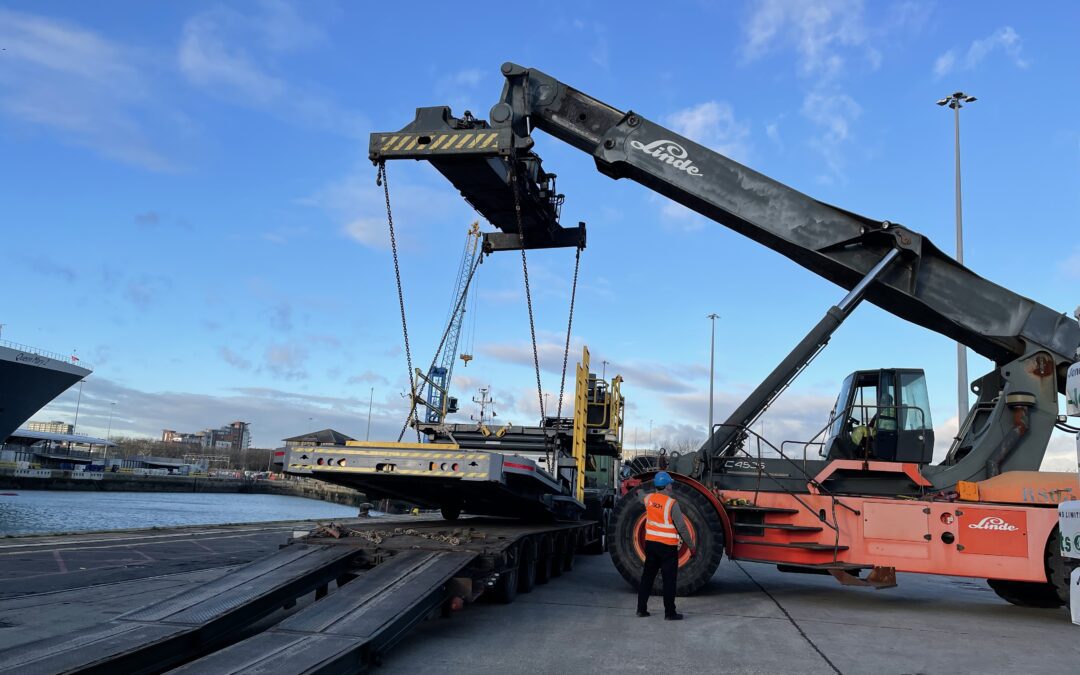Out-of-gauge cargoes are on the increase for SCH as it becomes increasingly more efficient and cheaper to ship on ro-ro vessels instead of breaking down large component parts to fit inside containers.
Placing project cargoes – sometimes weighing up to 120 tonnes – on Mafi trailers requires considerable planning and expertise, starting several months before the cargo is loaded on ship.
Initial planning focuses on assessing the load. Mafi trailers vary considerably in size and capacity so getting the right unit in place is essential. That can often mean shipping the trailer from Europe or the Far East to Southampton.
Careful consideration will also be required to determine the type of crane needed for the lift – up to 40 tonnes will be carried out by Reachstacker; a port quayside crane will be needed for loads between 40 and 60 tonnes and above that level will mean the hire of specialist mobile equipment, singly or in tandem.
Transporting the heavy loads to ports is also an important part of the operation. Some loads require escorts for the journey between production point and UK port of loading, demanding further detailed preparation and precise timing.
Arrival at the port is where we take over, confirming the load and lift configuration along with organising the space to carry out operations.
Once lifted from road transport and manoeuvred onto the Mafi shipping trailer, we are responsible for securing and lashing the cargo, of paramount importance to ensure the minimum of movement during the ship voyage. Fully prepared and readied on the quayside, the specialist load is then plotted into the shipping line system and loading programme for when the vessel arrives alongside.
The deck location and precise positioning of the heavy load is a key factor, while the height, weight and width of the load are also important considerations as the trailer is hauled up the ship’s ramp. Once in position, the trailer is secured to the deck to ensure there is no risk of movement during its deep-sea voyage.
Only when our handling teams have satisfied the requirements of the shipping line’s Port Superintendent or designated ship’s officer will the loading operation be signed off, with confirmation of the cargo locations also sent by our planners to the line’s management offices.
Often, such heavy loads are worth millions of pounds so there is no room for error. The expertise required to handle, secure and transport these out-of-gauge cargoes demands specialist equipment and a wealth of experience to ensure a seamless switch from road to sea.



